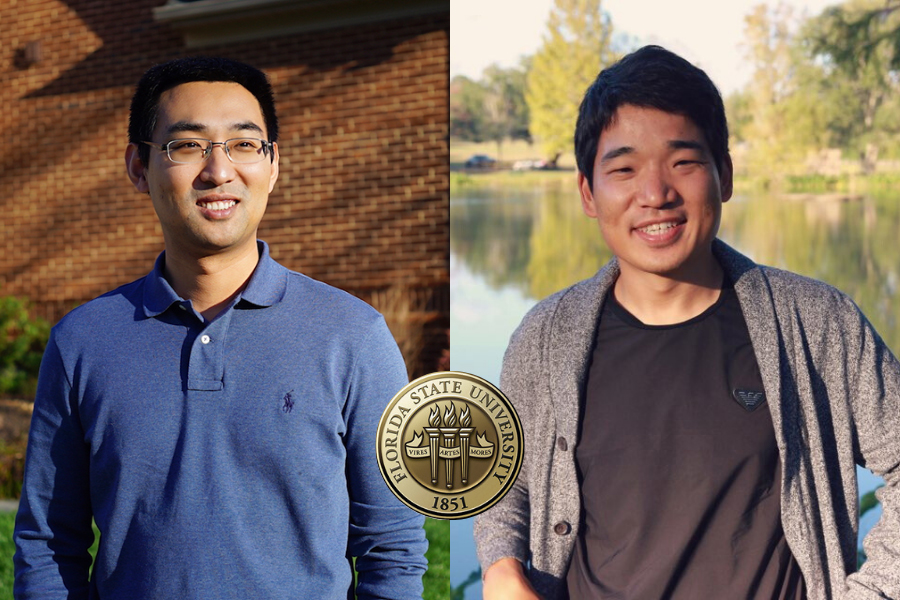
For decades, scientists have looked to the skies for ways to mitigate climate change – from solar panel farms to wind-driven turbines. Now, Florida State University researchers are looking at the ground beneath us for new ways to address some of today’s most complex global climate challenges.
Two researchers from FSU’s Department of Mathematics are taking part in the U.S. Department of Energy’s Energy Earthshots, a nationwide initiative aimed at accelerating breakthroughs in clean energy solutions within this decade through eight key targets, with a specific focus on subsurface energy systems.
FSU associate professors Sanghyun Lee and Feng Bao are members of a multi-institutional team that will use a three-year, $4.9 million grant from the Department of Energy (DOE) to explore use of geothermal energy to generate electricity and to identify techniques for removing carbon dioxide from the atmosphere and storing it underground.
Lee and Bao will build a computational model that provides a comprehensive understanding of the physical, geomechanical and geochemical processes that occur in subsurface energy storage and recovery systems.
“This opportunity symbolizes the chance to create a substantial influence within the realm of computational mathematics in the field of subsurface energy systems,” Lee said.
The interdisciplinary project is a collaboration with the University of Texas at El Paso, Sandia National Laboratories and the University of Utah and includes researchers across applied mathematics, data science, geochemistry, geoscience and engineering.
The team will tackle two of the Earthshots initiatives: the Enhanced Geothermal Shot, which will unlock the “heat beneath our feet” to maximize use of Earth’s nearly inexhaustible internal heat resources to reduce the cost of geothermal energy and feed new, clean electricity into the power grid; and the Carbon Negative Shot, through which carbon dioxide extracted from the atmosphere and oceans is stored in manmade and natural sinks to achieve negative CO2 emissions.
“The primary aim of our team is to develop innovative machine learning approaches that integrate highly complex systems and leverage a novel data assimilation method while utilizing state-of-the-art laboratory test data and field data,” Bao said. “This integration will enable us to construct a robust and efficient numerical simulator for subsurface energy storage and recovery systems.”
Lee and Bao will focus on the machine learning and data analytics aspects of the research, key components to answering questions about how emerging clean energy technologies can be improved upon and expanded for more widespread use.
“My major contribution to this project is to develop appropriate machine learning methods for simulating multiphysics models, and my expertise in data assimilation would allow me to analyze laboratory test data and field data in this project,” Bao said.
In recent years, the main challenges in subsurface energy systems — for example, enhanced geothermal systems and CO2 sequestration — have included issues arising from the multiphysical and multiscale nature of the problem and uncertainty quantification.
“Multiphysics means coupling solid mechanics, fluid mechanics, thermal energy and chemical reactions, while multiscale considers how to relate pore-scale problems to field-scale problems,” Lee said. “These problems are complex and require interdisciplinary efforts to achieve meaningful outcomes within the research.”
The team’s computational model will help scientists understand what is occurring at multiple scales in subsurface energy storage and recovery systems and facilitate more accurate predictions and the ability to optimize and manage enhanced geothermal and carbon sequestration systems.
“It is very exciting to see Sanghyun Lee and Feng Bao engaging in a multi-institutional partnership to help accelerate breakthroughs and advance the Energy Earthshot goals of delivering clean energy solutions in response to the climate crisis,” said Department of Mathematics Chair Washington Mio. “This will place the FSU Mathematics Department at the frontier of energy research and provide our students and postdocs new opportunities for research of high environmental and societal impact.”
To learn more about the DOE’s Energy Earthshots initiative, visit energy.gov. To learn more about mathematics research at FSU, visit math.fsu.edu.




